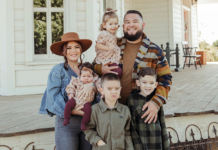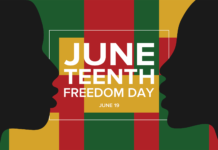
Rosalie Brown Thunder let fear of racism slow her steps to getting a good education. Indians were called “dumb,” “dirty” and other things she did not want talk about.
Still, “I remember when I was 12 years old, I was picking beans and I could see beautiful cars with luggage whizzing by,” she said. “I was down on all my fours picking, and I thought someday I will go as high as I can in education.”
The Depression-era daughter of migrant farm workers grew up in Black River Falls, Wis.
Today Thunder is a renowned Native American educator who spoke Tuesday during Maricopa Unified School District Family Night because her “precious cargo” – her grandson and two granddaughters – attend MUSD schools.
Her message was one of awareness and celebration of culture. Speaking to teachers in the district, she shared the struggles she and other Native Americans have endured to help educators better relate to Native American students.
Thunder teaches school in Black River Falls. She said she grew up in the Indian community with a population of 5,000 people and went to school in a two-room school house until she graduated from high school at 16.
“My experience in high school was very sad because of the blatant racism in Black River Falls,” she said. “But it is getting a little bit better because of the work we’re doing teaching kindergarten and first grade.”
She teaches the Indian language at the school so it will not be forgotten. The language is Ho-Chunk.
Thunder went to Chicago after she graduated from high school and worked as a teletype operator. She said she was reluctant to go to college because of the racism she had experienced. She eventually earned a master’s degree from Penn State University in education and a doctoral degree, writing her dissertation on Indian boarding schools. She went on to become a principal.
She said Native Americans face a number of barriers to education in the United States.
“There is a history of trauma. … The government has always tried to eradicate the Native American culture. We showed we were tough and we’re still here.
“The boarding school trauma was passed on from generation to generation. The government used the government against us,” she said, referring to the policy by the government starting in the 1880s to take Indian children from their parents at an early age and send them to boarding schools to be educated.
“Children 5, 6, 8 years old were torn from their homes and sent to boarding schools,” she said.
Boys and girls wore long braids at that time and the schools cut their hair short, took away their moccasins and other Indian clothing, she said. Children did not go home during the summertime and were away from their parents for several years at a time, which left the children without role models.
“(Consequently), the children of that era didn’t know how to be parents – they were robbed of that,” she said.
“They tried to strip your heritage from you – always trying to turn Native Americans into mainstream and it never really worked,” she said.
Thunder said she is a member of the Bear clan, whose duty is to protect, be peacemakers and resolve problems. Each clan has a particular role to play in the culture.
“(Our culture) has many ceremonies and it is a really beautiful way of life.” There are specific ceremonies, for example, when someone dies. Everyone knows the part they play in those ceremonies.
Elders are respected because of their knowledge, she said. They are handed their plate of food first and always given a place to sit, in case their limbs might be weak.
***ADVERTISEMENT***Speaking about the education process today, she said “most schools are not very inviting to our people.” The secretaries are not very friendly, and parents are reluctant to attend parent-teacher conferences for a reason.
She said the school district she teaches in tries to infuse some Native American culture into the curriculum. The school has one black, “a few Spanish” students and Native Americans.






![Maricopa sheds tears amid Maui wildfires that killed dozens For Maricopa resident Janelle Gomez, the sorrow mirrors the loss of a family member. [Brian Petersheim]](https://www.inmaricopa.com/wp-content/uploads/2023/08/Gomez-218x150.jpg)
![Embracing Freedom: Celebrating the Fourth of July Councilmember Vincent Manfredi at Great American 4th 2021 [Victor Moreno]](https://www.inmaricopa.com/wp-content/uploads/2023/07/2021-Great-American-4th-e1688414543522-218x150.jpg)



![Maricopa restaurateur makes Food Network connection [Namkeen Dhaba]](https://www.inmaricopa.com/wp-content/uploads/2024/04/439456716_377105198650519_7536248579664805896_n-218x150.jpg)
![Merging lanes incite more 347 anger A merging lane sign sits on the side of State Route 347 northbound lanes during evening traffic on April 30, 2024. [Monica D. Spencer]](https://www.inmaricopa.com/wp-content/uploads/2024/04/spencer-043024-adot-merging-lanes-347-web-218x150.jpg)




